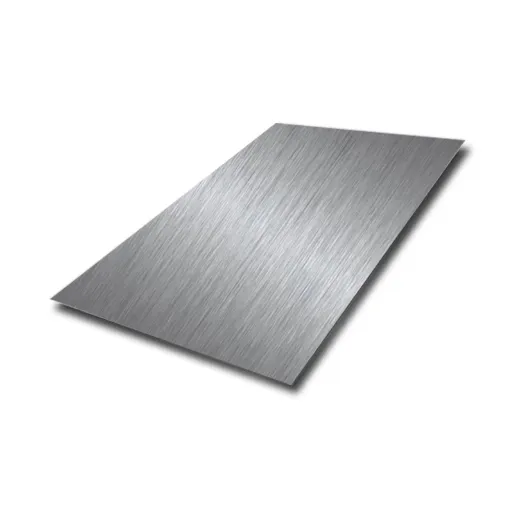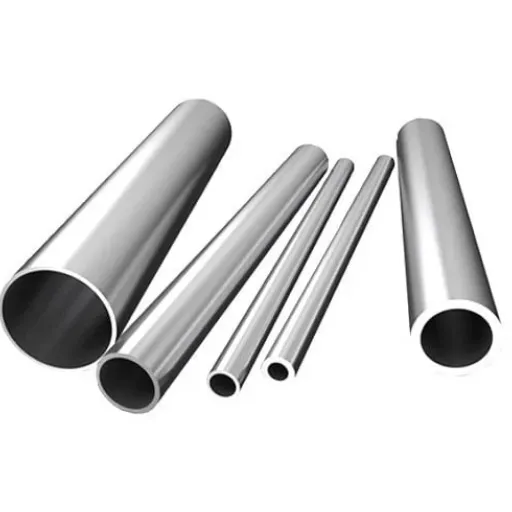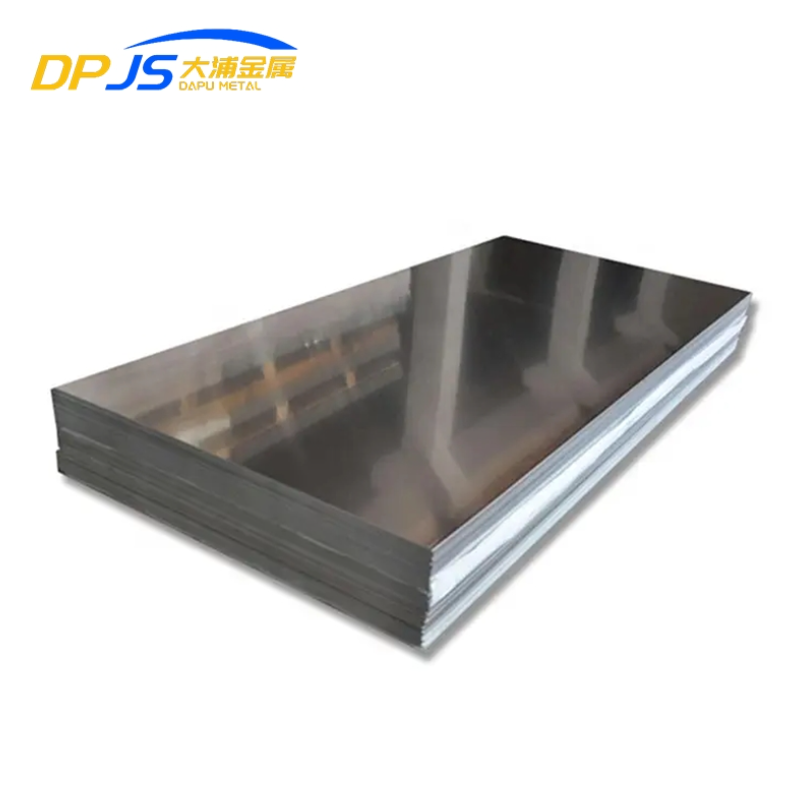Industrial operations in the automotive, construction, and food processing industries are feeling the massive influence of stainless sheet prices in the global market. As supply chains are normalizing somewhat after the last round of chaos, insights into regional differences, future predictions, and other aspects relevant to pricing dynamics is indispensable for procurement teams looking to make the most of the pricing advantage without distorting quality standards.
Product Overview
Full Material Name: Stainless Steel Sheet (Cold-Rolled and Hot-Rolled)
Generic Grades and Standards:
- ASTM standards: A240/A480 (most widely referenced in North America).
- EN Standard: EN 10088-2 (European Standard).
- JIS Standards: JIS G 4305 (Japanese Industrial Standard).
Popular Grades:
- 304/304L (18% Cr, 8% Ni) – general-purpose austenitic
- 316/316L (16% Cr, 10% Ni, 2% Mo) – marine and chemical-resistant
- 430 (16-18% Cr, <0.12% C) – ferritic, decorative applications
- 201 (16-18% Cr, 3.5-5.5% Ni, 5.5-7.5 Mn) – cost-effective Austenitic alternative.
Typical Chemical Composition (Grade 304 example):
| Element | Percentage (%) |
|---|---|
| Chromium (Cr) | 18.0–20.0 |
| Nickel (Ni) | 8.0–10.5 |
| Carbon (C) | ≤0.08 |
| Manganese (Mn) | ≤2.0 |
| Silicon (Si) | ≤1.0 |
| Iron (Fe) | Balance |
Main Physical Properties (Annealed 304):
- Tensile Strength: 515-720 MPa
- Yield Strength: ≥205 MPa
- Elongation: ≥40 (%) (in a 50mm gauge length)
- Hardness: ≤92 HRB (on the Rockwell B scale)
Standard Dimensions:
- Thickness: 0.3mm (cold rolled)-6.0mm, 3.0mm (hot rolled)-100mm
- Width: 1,000mm, 1,219mm (4 ft), 1,500mm, 2,000mm
- Length: 2,000mm, 2,438mm (8 ft) or 3,000mm, 6,000mm
- Finishes: 2B (Cold rolled annealed bright), BA (Bright annealed), No. 4 (Brushed), Mirror polished
Main FSI:
- Automotive-Stainless steel is used in the production of exhaust systems, trimming, and structural components.
- Architectural-For cladding, roofing, elevator interiors, and handrails.
- Food processing-Selection of equipment and storage tanks, conveyor systems.
- Chemical-Including chemical reactors and distillation systems.
- Medical field-Equipment for surgeries, implants, and sterilization.
Global Price per Kilogram (Current Snapshot)
Prices for international stainless steel sheet as of November 2025 are showing the following for Grade 304 cold-rolled with 2B finish and thickness of 1.5mm.
Spot Price Range: USD 3.20–3.85/kg FOB as of now (Asia and European export ports).
Some established sources are as follows:
1.Shanghai Metals Market (SMM)- November 13, 2025
- 304 2B (1.5mm): CNY 23,100–23,800/ton = USD 3.18-3.28/kg on FOB Shanghai/Ningbo basis.
2. MEPS International– November 2025 (month report)
- European 304 CR Sheet:EUR 3.45-3.70/kg= USD 3.70-3.97/kg ex-works.
- Roughly FOB adjusted: USD 3.50–3.75/kg.
3. Platts Steel Alert– Week of November 11, 2025
- Asian export 304 CR: USD 3,250-3,400/ton = USD 3.25-3.40/kg FOB, Korea/Taiwan/China origin
CIF Premiums to Major Hubs (to be added to the FOB pricing):
- Rotterdam: + USD 0.15–0.25/kg (freight + insurance from Asia)
- Los Angeles: + USD 0.12–0.20/kg (trans-Pacific shipping)
- Dubai: + USD 0.10–0.18/kg (Middle East gateway)
- Santos, Brazil: + USD 0.22–0.35/kg (South America premium)
Regional Sales & Pricing in Key Markets
| Country/Region | Typical Price (USD/kg) | Main Suppliers | Local Taxes/Duties | Popular Specs |
|---|---|---|---|---|
| China | 3.15–3.35 | Tsingshan, TISCO, Baosteel | 13% VAT | 304/2B, 201 (cost-driven) |
| European Union | 3.85–4.20 | Outokumpu, Aperam, Acerinox | 0–6.8% duty (origin-dependent) + VAT | 304L/316L, EN standards |
| United States | 4.10–4.65 | North American Stainless, Outokumpu, imports | 25% Section 232 tariff (non-exempt origins) | 304/304L ASTM, 2B/BA finish |
| India | 3.40–3.75 | JSW Steel, Jindal Stainless | 18% GST, 7.5% import duty | 304/2B, 202 grade popular |
| Japan | 3.90–4.25 | Nippon Steel, JFE Steel | Minimal (export-oriented) | JIS G4305, high-quality BA |
| Southeast Asia | 3.50–3.90 | Imports from China/Taiwan/Korea | 5–15% duty (ASEAN varies) | 304/2B, 430 decorative |
Regional Insights:
- China is far ahead in production worldwide (≈60 percent market share) because of competitive prices, integrated nickel pig-iron supply chains, and economy of scale.
- Europe can afford to retain its high premium pricing because of rigorous quality certifications, a carbon border adjustment mechanism (CBAM), and high energy costs.
- US prices continue to be high, marked by the stringent Section 232 tariffs on most imports, shielding domestic producers but driving up the final cost to users.
- India has been swiftly manipulating large-volume contractual pricing for 200 series grades, chiefly through manganese substituting nickel.
Historical Price Volatility (Past 24 Months)
Monthly Average 304 CR Sheet Price (USD/kg, FOB Asia)
2023-11: 3.45 │
2023-12: 3.38 │
2024-01: 3.52 │ ╭────╮
2024-02: 3.68 │ ╭─╯ │
2024-03: 3.85 │ ╭╯ │
2024-04: 3.92 │ │ ╰╮ Peak
2024-05: 3.78 │ │ ╰╮
2024-06: 3.65 │ │ ╰╮
2024-07: 3.58 │ │ │
2024-08: 3.48 │ │ ╰╮
2024-09: 3.35 │ │ ╰╮
2024-10: 3.28 │ │ ╰─╮ Trough
2024-11: 3.32 │ │ │
2024-12: 3.40 │ │ ╰╮
2025-01: 3.38 │ │ │
2025-02: 3.35 │ │ │
2025-03: 3.30 │ │ │
2025-04: 3.28 │ │ ╰─── Stabilization
2025-05: 3.32 │ │
2025-06: 3.35 │ │
2025-07: 3.38 │ │
2025-08: 3.42 │ │ ╭─ Recovery
2025-09: 3.48 │ │ ╭──╯
2025-10: 3.52 │ │ ╭──╯
2025-11: 3.55 │ │ ╭──╯Key Statistics:
- Peaks: USD 3.92/kg (April 2024) – +19.5% from Nov 2023
- Trough: USD 3.28/kg (October 2024) – -16.3% from Peak
- Current Level: USD 3.55/kg (November 2025) – +8.2% Recovery from Trough
Key Price Drivers (Last 24 months):
- Surge in Nickel Prices (Q1 2024): LME nickel spiked to USD 21,500/ton, as the delayed Indonesian export permit and higher EV battery demand directly influenced the costs of 300 series stainless steel.
- Chinese Property Market Slowdown (Q2 to Q3 2024): The Evergrande collapse and construction slowdown led to reduced domestic stainless steel demand, as Chinese mills flooded excessive inventory in export markets at discount prices.
- EU’s Carbon Border Adjustment Mechanism (CBAM): October 2024: The establishment of reporting requirements caused temporary confusion and hedging activity contributing to rising volatility in European markets.
- Indonesian Nickel Capacity Expansion 2024 Mid-term: Increase of HPAL new projects and rotary kiln projects have increased raw material supply in turn easing input cost and pushing towards price stabilization toward the fourth quarter of 2024.
- Global Manufacturing PMI Recovery (2025): Slow improvement in manufacturing PMIs in U. S., EU, and Asia counties drove restocking demand, thus supporting price improvements from August 2025 onward.
Short-Term & Long-Term Price Trends
Next 3–6 Months Forecast (December 2025 – May 2026): neutral to slightly bullish
Major driving factors:
- Nickel fundamentals: LME nickel inventory reductions (currently 47,000 tonnes, down from 70,000 tonnes in January), leading to the impression of a supply squeeze and prices expected to remain in the USD 16,500-18,000/tonne band.
- Seasonal Restocking : Traditional Q1 stock unloading in auto and appliance sectors would mildly support demand.
- China stimulus measures: Beijing’s infrastructure spending packages (announced October 2025) may boost domestic consumption, reducing export pressure.
- Energy costs: European natural gas prices remain elevated yet stable; any great shifts in costs that may happen in the future cannot be foretold.
- Forecast range: USD 3.50-3.75/kg FOB Asia for 304 CR sheet (±5% from current levels).
Analyst Views:
- CRU Group (November 2025 report): “We think that stainless steel prices will continue to be range-bound till the first quarter of 2026, with excess capacities limiting the top-end rise and raw material floors offering protection on the downside.”
- Mysteel Global (Outlook through October 2025): foresees 3% price appreciation in H1, 2026, largely due to inventory restocking and rising sentiment in end-use markets.
2026–2028 Outlook: strucaturally supportive
Growth factors in the long term:
- The transition to the green steel: With decarbonization regulations in the EU and ESG-related constraints by corporates growing, costs will be bumped by an additional 8-12%(DRI by hydrogen, added-pure funds); thereby they will gradually heighten the tubulars’ price floors.
- Electric vehicles: Demand for electric vehicle production will favor high-grade stainless steel in battery enclosures, heat exchangers, and parts by the EV industry consuming 2-3 million tons a year, with production of up to 25 million units expected by the end of 2027, from 14 million units in 2023.
- Infrastructure Spending: Japan and the EU intend to allocate more than $150 billion to projects requiring corrosion-resistant materials via the US Infrastructure Bill, resulting in sustained demand.
- Supply Discipline: The Chinese government’s pattern of consolidation policies wasmost recently defined when these governing bodies aimed to decrease fragmentation; top 10 members are having control of ~75% of the capacity, which may hold pricing discipline in them versus economies that have experienced such cycles before.
- Nickel Supply Risks: The geo-political problems in Indonesia and the Philippines (the two countries together serving to produce nearly 60% of nickel for the world market) create medium-term vulnerability because stock would be over.
Industry Reports:
- World Steel Association: World crude stainless steel averaged 27.1 million metric tonnes per annum in 2011-2019 and is projected to fall to 24–26 million metric tonnes in 2025, highlighting relevant flat steel and stainless steel grades’ market share. This 2025 Short Range Outlook of global stainless steel demand growth, with only 2.8% CAGR estimated between 2025 and 2027 due to a carbon steel growth of 2.4% CAGR between 2020 and 2022, predicted at 1.5% worldwide.
- WoodMac: Forecasting a general annual price appreciation of between 1.5%-2% until 2028 due to the increase in the quality of nickel attributed to the amplification of base metal and quality premiums.
6. Buying Tips & Risk Hedging
Procurement Best Practices
Minimum Order Quantities (MOQ):
- Mill Direct: 20–25 tons for normal sorts/sizes (equivalent to one container load)
- Service Centres: 1-5 tons, with a premium of 0.10-0.25/kg
- Spot Market: Small quantities but expect to pay 15-30% more on price.
Lead times:
- Local stock: 1-2 weeks assuming that stock is with distributors
- Normal production: 6-10 weeks (mill production + logistics for flow)
- Custom specifications: 12-16 weeks-special rolling, finishing made
Mode of Payment:
- Letter of Credit (LC): Industry standard in international transactions; 30-60 days sight LC common
- TT (Telegraphic Transfer): In an established trade relationship, 30% deposit, 70% against B/L copy payments are typical
- Open Account: Gently offered to true partnership accounts; up to 30–60 days net.
Price Risk Management
Hedging Strategies:
- Contracts Forwarded With Suppliers: The best way to proceed would be to make a commitment to price locks for 50–70% of annual needs. Lock in for 3–6 months; suitable for days when price uptrend is in the offing.
- LME Nickel Futures: Due to a 35–45% component of 300-series stainless steel costs, one may hedge nickel exposure to offset 60–70% of the raw materials risk. Trading is done through metal brokers, and the minimum size of the contract is 6 tons.
- Supplier Price Protection Agreements: Price Ceiling and Price Floor Collars. Negotiate with suppliers to get protection at predefined minimum and maximum prices, usually within an 8% buffer either way; some suppliers may charge a premium of around 2–3% for this insurance.
- Strategic Inventory: Keep 4–6 weeks of inventory when the prices are favorable; the saving could be justified against carrying costs regular in metal business, such as warehousing, financing, and insurance (around 15% annually).
- Multiple-Sourcing: It is beneficial to get supplies from 3+ sources from different regions, leveraging competitive tension and avoiding single-sourcing risk.
Quality Assurance Red Flags
Counterfeit/Substandard Material Indicators:
- Absent/irregular MTCs: A genuine MTC will have heat/batch numbers, complete chemical analysis, mechanical testing results, and the mill logo watermarked.
- Price too good to be true: A standard grade
- Vague origin declarations: Established suppliers provide for a specific mill source; however, a generic label covering “Asia origin” or “imported” can potentially indicate risky transactions.
- No PMI testing: Require handheld XRF analysis for positive materials identification upon delivery; elemental accuracy of ±0.5% is standard.
- Inconsistencies in surface finish: 3rd-grade 2B finish has to be uniform and surface finish has to be in accordance with the standard that reads Ra
- Thick’n’wide deviations: Pick a sample at random; those samples show that anything greater than ±0.05 mm in thickness or ±2 mm width or larger variances are incredibly incapable control or are indicative of under-sizing in bad faith.
Verification Checklist:
✓ Request the certified MTC matching the specific coil/sheet heat numbers
✓ Conduct PMI testing on-site before it is accepted
✓ Verify if the ISO 9001 certification and customer references of a supplier are valid
✓ Don’t pack tamper-evident packs or test labelling correctness.
✓ Some test pieces are needed for corrosion resistance testing (salt spray: ASTM B117)
Conclusion
The page file for standing steel price by late 2025 represents the market that is moving from volatility to a timid stability currently with a benchmark price of USD 3.20 to 3.85/kg for grade 304 stainless steel. Many key determinants of this price will be nickel price movements, Chinese production policies, and regional tariff movements. Bargaining committees might as well hedge forward, multi-source sourcing, and carefully vet potential suppliers while maintaining quality standards. Markets look fine in the medium term, supported by infrastructure expenditure, EV adoption, and consolidation; however, some short-term lows will stay only because of the background of various geopolitical and macroeconomic events.
Key Sources Referenced:
- Shanghai Metals Market (SMM) – smm.cn
- MEPS International – meps.co.uk
- Platts Steel Alert – spglobal.com/platts
- CRU Group – crugroup.com
- World Steel Association – worldsteel.org
- Wood Mackenzie – woodmac.com
- Mysteel Global – mysteel.net
Disclaimer: Prices and forecasts in this article reflect data available as of November 5, 2025, and are subject to change without notice. This analysis is for informational purposes and does not constitute financial, legal, or commercial advice. Always verify current spot prices and contractual terms directly with suppliers and industry pricing services.






